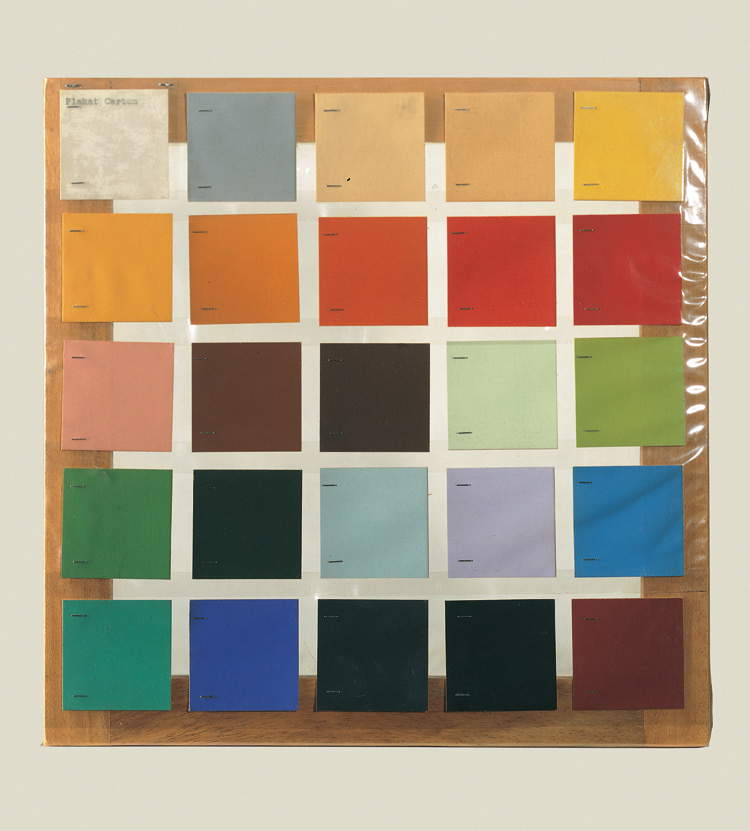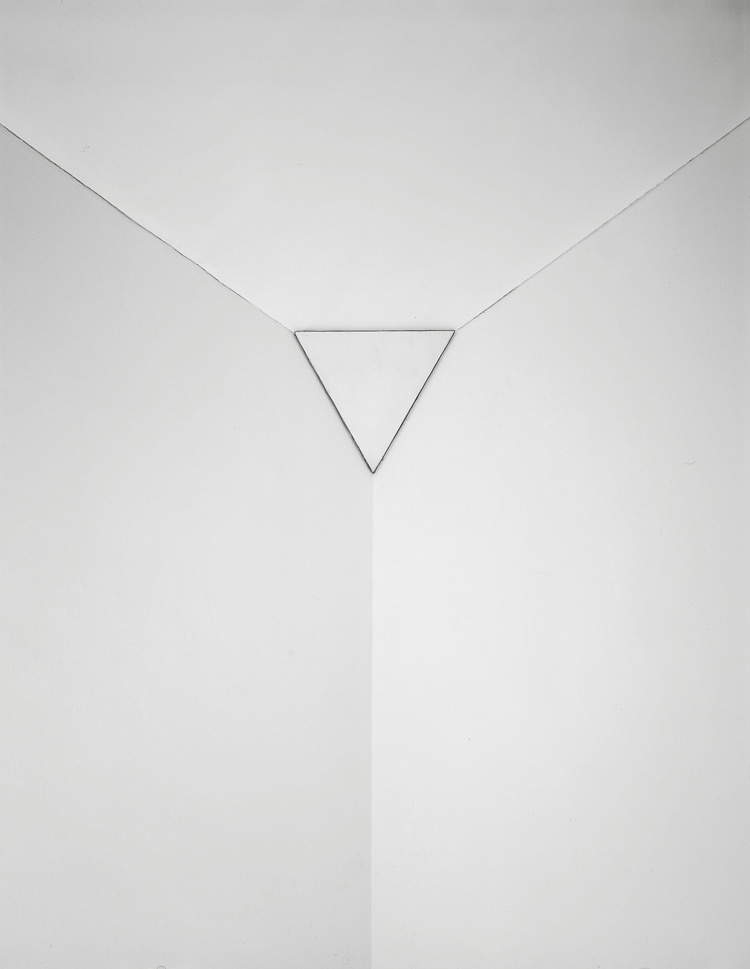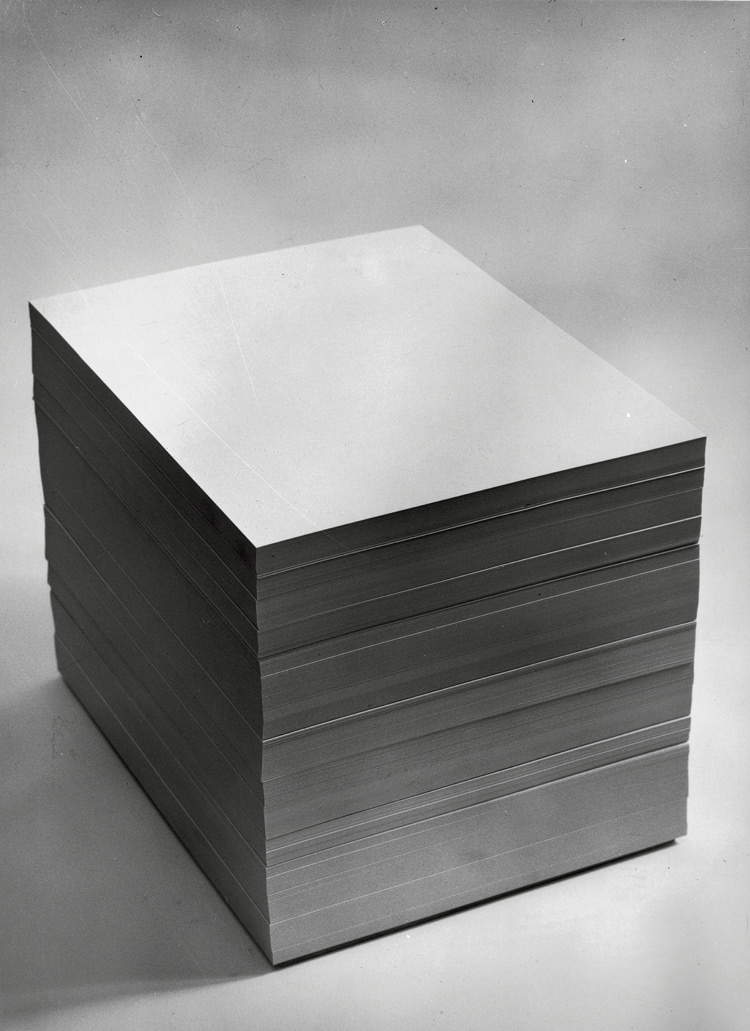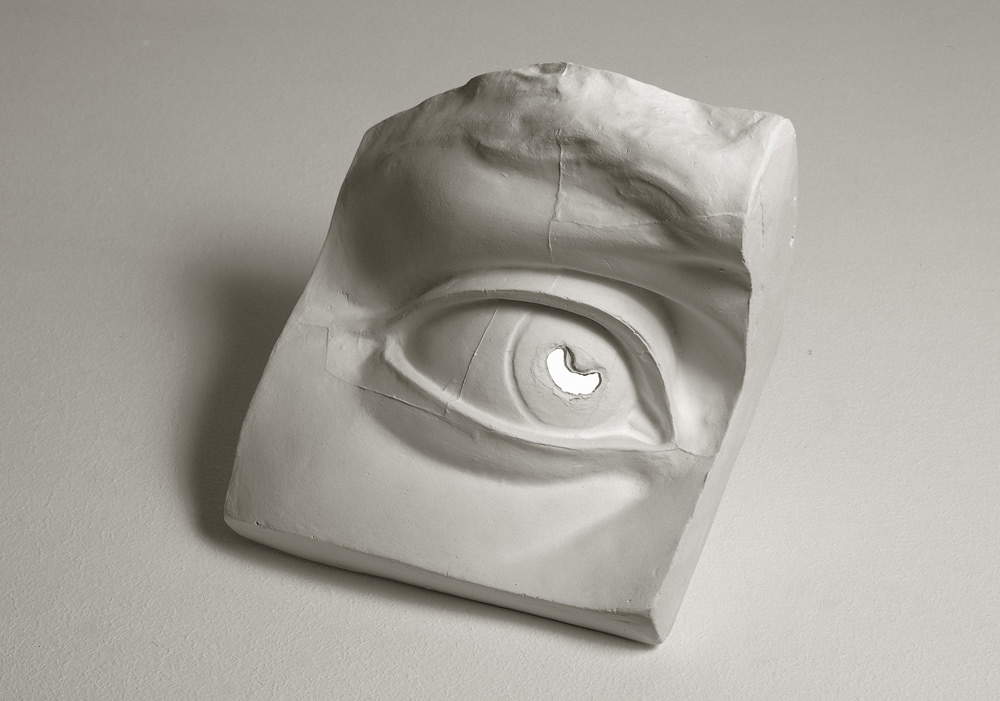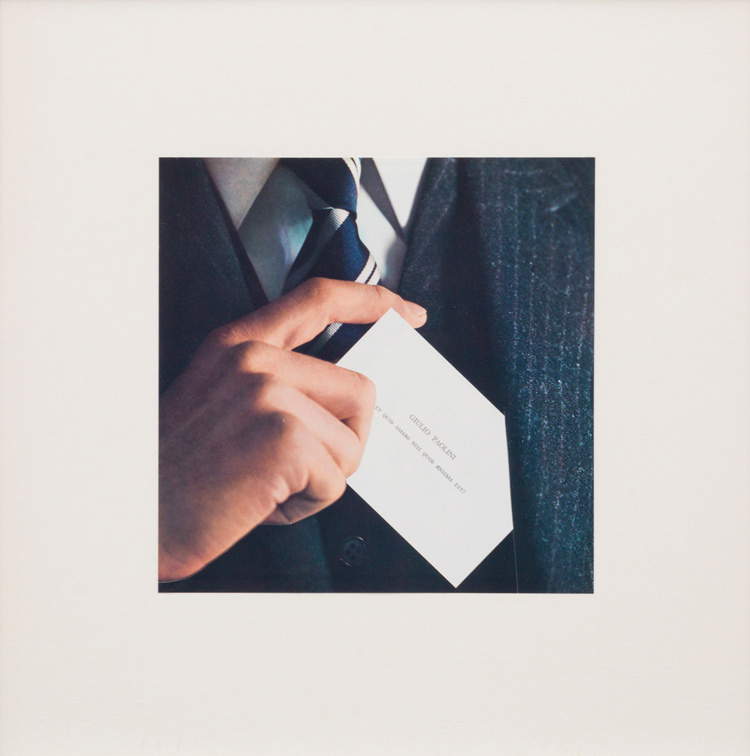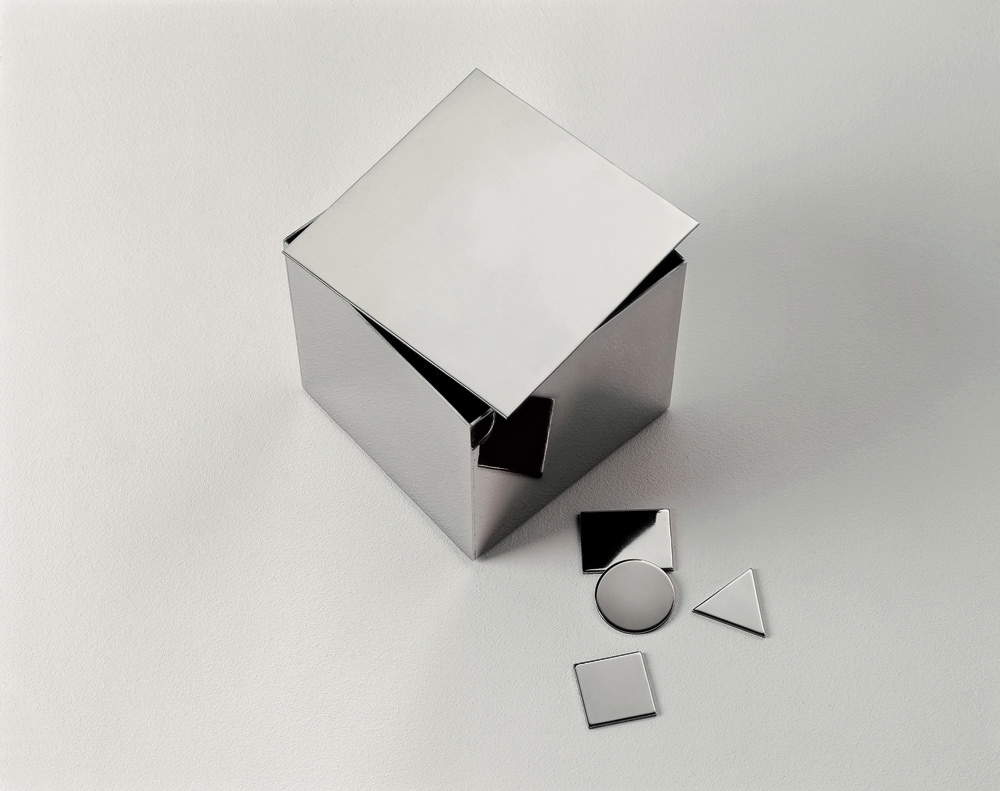by Redazione , published on 03/10/2018
Categories: Exhibitions
/ Disclaimer
'Del bello ideale,' a retrospective on Giulio Paolini, is on view at the Fondazione Carriero in Milan from October 26, 2018 to February 10, 2019.
A major exhibition dedicated to Giulio Paolini (Genoa, 1940) is scheduled at the Carriero Foundation in Milan from October 26, 2018 to February 10, 2019: Giulio Paolini. Del bello ideale, curated by Francesca Stocchi and with scenographic interventions by Margherita Palli, is part of a series of exhibitions with which Fondazione Carriero intends to exploreconceptual art, of which Paolini was a pioneer in Italy and of which he continues to be an undisputed protagonist. Del bello ideale, with a selection of works spanning a fifty-seven-year career, is thus a major retrospective capable of offering the public both cornerstones of Paolini’s production, such as Monogramma (1965), AB 3 (1966), Nécessaire (1968), and Controfigura (critique of the point of view) (1981), and three new works created especially for the exhibition.
“Paolini,” the presentation reads, “responded to the Fondazione Carriero’s invitation by getting personally involved in the creation of the exhibition and agreeing to engage in an introspective exercise, in a process of reading from the inside, and in some cases re-reading, his production. The dialogue with curator Francesco Stocchi resulted in a non-chronological exhibition itinerary, punctuated by thematic nuclei that are articulated in space by entering into a relationship with the architecture of the building, allowing the visitor to focus on Paolini’s poetics and to simplify his understanding. Through this exercise, the exhibition ”breaks down“ Paolini’s work, dissects it by adopting the same theoretical and formal approach used by the artist in his works and in his way of approaching art.”
The exhibition itinerary is based on three thematic nuclei, each occupying a different floor of the Foundation. On the ground floor, the layout revolves around the theme of Portrait and Self-Portrait, the fulcrum of Paolini’s poetics, which since the early 1960s has grappled in a highly personal way with the analysis of this theme, distilling it down to the subtraction of the author in his work. The section on the second floor is entitled In superficie (On the Surface ) and develops the relationship with the theme of perspective in its various declinations, from the investigation of line to the symbology of the horizon to the use of specularity, tautology and repetition as tools for analyzing space and time. Finally, the rococo room on the second floor is the setting for One of Two, which presents a selection of works that investigate the relationship between myth and classicism in Paolini’s artistic universe, emblems of that ideal beauty that, in polarizing gazes with its harmony, creates a seemingly unbridgeable distance between work of art and observer.
“In this multi-level introspective journey,” the presentation continues, “Paolini takes on the guise of the archaeologist, of the scholar who abandons the nostalgic dimension of looking at (his own) past to analyze it with new awareness, digging into the psyche and the history of art until he gets to the roots of his thought. It is a journey into the philosophical category of time, highlighting how his research does not lie along a line of diachronic evolution, by progressive stages - from the past to the present to the future - but is rather ascribable to a synchronic dimension, to a continuous present, made up of a constant variation on the theme since his first work. Just as if his work were, in the end, one continuous work.” The title of the exhibition, Del bello ideale (Of Ideal Beauty), is meant to make clear how Paolini’s work tends toward an “ideal,” in a sense absolute or utopian dimension, which can be perceived as cryptic, not easy to read for the uninitiated. Set designer Margherita Palli has been invited to enter into dialogue with the artist’s body of work, creating interventions capable of staging the thematic cores of the exhibition and which, drawing on Paolini’s own sources and some works from his private collection, offer visitors the chance to enter his world and participate from the inside in this introspective journey. In particular, Margherita Palli tackled the theme of portraiture and self-portraiture on the ground floor, transforming one of the Foundation’s rooms into a Wunderkammer inspired by Federico da Montefeltro’s studiolo, and the theme of perspective on the second floor, reproducing, in dreamlike form on an entirely hand-drawn surface, the key principles of the treatise on perspective by Flemish architect and artist Hans Vredeman de Vries, a reference text in Paolini’s poetics. Margherita Palli’s scenographic interventions stand in stark contrast to the rarefied rooms and white spaces that house the artist’s works, visual counterpoints that underscore Paolini’s lifelong interest in the scenographic aspect of an exhibition, and in theater more generally, and that reveal his essence as an artist whose palette is art history and whose culture is profoundly Italian
The exhibition, open every day except Monday from 11 a.m. to 6 p.m., is free admission and is made possible thanks to close collaboration with Giulio Paolini and the Giulio and Anna Paolini Foundation and loans from prestigious public institutions and important private collections. The catalog (Italian and English) is published by König Books, is edited by Francesco Stocchi, and will collect images of the works set up in the spaces of the Fondazione Carriero, with contributions by Giulio Paolini and Francesco Stocchi, among others. Below are some photos of the works on display.
 |
| Giulio Paolini, Untitled (Plakat Carton) (1962; Colored cardboards fixed with staples on polyethylene, frame, polyethylene). © Giulio Paolini Photo © Paolo Mussat Sartor. Courtesy Giulio and Anna Paolini Foundation, Turin, Italy. |
 |
| Giulio Paolini, AB 3 (1966; Prepared canvas). © Giulio Paolini Photo Paolo Pellion. Courtesy Fondazione Giulio and Anna Paolini, Turin. |
 |
| Giulio Paolini, Nécessaire (1968; white sheets of paper). © Giulio Paolini Photo Mario Sarotto. Courtesy Fondazione Giulio and Anna Paolini, Turin. |
 |
| Giulio Paolini, Elegy (1969; Plaster cast with mirror fragment). © Giulio Paolini Photo © Paolo Mussat Sartor. Courtesy Giulio and Anna Paolini Foundation, Turin. |
 |
| Giulio Paolini, Et quid amabo nisi quod ænigma est (1969-70; Collage on paper). © Giulio Paolini Photo Adam Reich. Courtesy Giulio and Anna Paolini Foundation, Turin. |
 |
| Giulio Paolini, Idem IV (registry of works as a scattered geometric figure motif) (1974; Polished copper). © Giulio Paolini Photo Courtesy Fondazione Giulio e Anna Paolini, Turin |
 |
| Giulio Paolini, Mimesis (1975; Plaster casts). © Giulio Paolini. Photo courtesy Giulio and Anna Paolini Foundation, Turin. |
 |
| Giulio Paolini, Controfigura (critique of point of view) (1981; Photograph on emulsified canvas). © Giulio Paolini Photo Adam Reich. Courtesy Giulio and Anna Paolini Foundation, Turin. |
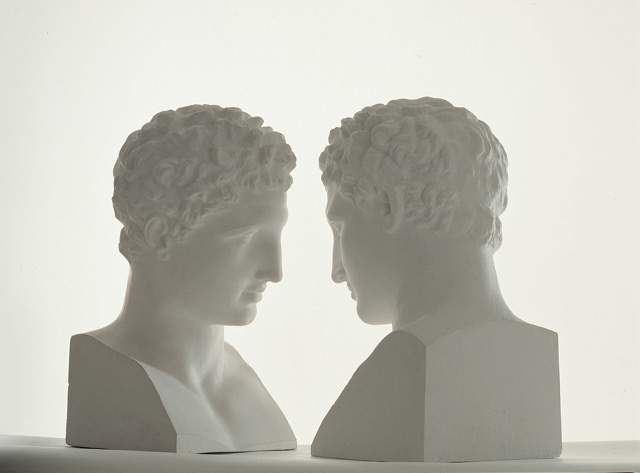 |
| Giulio Paolini, genius of conceptual art, stars in major retrospective in Milan. Photos of the works |
Warning: the translation into English of the original Italian article was created using automatic tools.
We undertake to review all articles, but we do not guarantee the total absence of inaccuracies in the translation due to the program. You can
find the original by clicking on the ITA button. If you find any mistake,please contact us.
